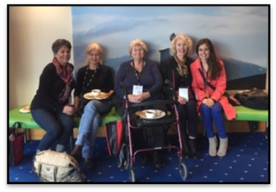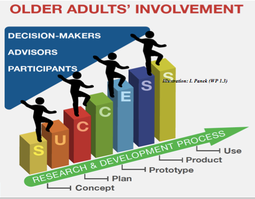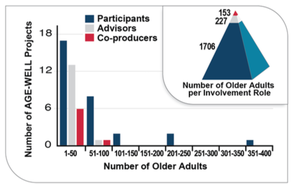I always enjoy the opening evening of “Drinks and Demos”. This is an event where researchers display their research and prototypes in a relaxed setting where we get to enjoy drinks and appetizers. I would even enjoy it without the drinks. It is fascinating to visit the many displays and to discover what is new in aging research or is currently being developed. I’m especially impressed when technology can provide support to me in the least intrusive manner. For example, when living alone, safety and security are real issues. Who would know if we fell, or became unconscious and unable to seek help? A prototype that I saw at this event was a system that is able to record, through installed ceiling sensors in four key rooms, whether a room had been entered. Failure to have used, say the bedroom or bathroom over a period of time would send a signal to a designated person who could investigate a possible problem.
Other intriguing displays at this event included book apps, pill dispensers, and safety devices to promote walking by those in wheelchairs. As well, the poster displays are always of great interest. One poster entitled MyHealthMyRecord (MHMR) described a project enabling a person coping with chronic pain to record their experiences in privacy through short videos, to be shared if they wished. I truly appreciate the creativity and dedication of the researchers and students who devise new ideas to help us all to age well.
With all new technology, it is important to remember that many older adults, who worked and retired prior to computers and cell phones becoming common forms of technology, lack a comfort level with the skills and knowledge that younger people take for granted. That is why it is so important to include older adults early in the developmental stages, to ensure that new products are not only useful, but will be used by older adults. Finally, it was a pleasure to be able to co-present with Dr. Susan Kirkland on Engaging Older Adults in Research: Processes and Perspectives in Aging and Technology Case Studies. For me, reading and coding a series of researcher interviews that were conducted as part of the case studies project was rewarding, and corroborated our OA-INVOLVE belief that the end user must be included in the earliest stages of product development. Thank you to all at AGE-WELL who make these conferences possible.
By Janet Fowler, OARPG Member





 RSS Feed
RSS Feed